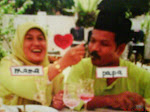
The Quadriceps are a group of four muscles that sit on the anterior or front aspect of the thigh.
Rectus Femoris:
Origin:
- straight head: anterior inferior iliac spine
- reflected head: groove on upper brim of acetabulum
Insertion: upper border of patella by the ligamentum patella into tibia tuberosity
Reversed origin-insertion action: flexes the pelvis on the femur and gives anterior stabilization to the pelvis
Nerve supply: femoral, L2, L3, L4
Synergists: psoas, sartorius, tensor fascia lata, vastus lateralis, vastus medialis, vastus intermedius;
Arterial supply: ascending branch of LFCA
Ref: Contribution of rectus femoris and vasti to knee extension. An electromyographic study.
Vastus Intermedius:
Origin: proximal 2/3 of the anterolateral surface of the femur, lower 1/2 of the linea aspera, upper part of the lateral supracondylar line; lateral intermuscular septum
Insertion: by tendons of the rectus and vastus muscles into the superior border of the patella and by the ligamentum patella into the tibial tuberosity
Action: extends the leg at the knee
Nerve supply: femoral, L2, L3, L4
Synergists: rectus femoris, vastus medialis, vastus lateralis
Arterial supply: descending branch of LFCA
Vastus Lateralis:
Origin: upper part of intertrochanteric line, anterior and lower borders of greater trochanter, lateral lip of gluteal tuberosity, upper half of linea aspera, lateral intermuscular septum, and tendon of maximus
Insertion: lateral border of the patella by the ligamentum patella into the tibia tubercle;
Action: extends the leg at the knee and draws the patella laterally;
Nerve supply: femoral, L3 > L2, L4; (see innervation)
Synergists: rectus femoris, vastus intermedius, vastus medialis;
Arterial supply: descending and transverse brs. of LFCA;
Vastus Medialis:
Origin: lower 1/2 of the intertrochanteric lines, medial lip of linea aspera, upper part of medial supracondylar line, medial intermuscular septum tendons of adductor magnus and adductor longus
Insertion: Medial border of the patella by the ligamentum patella into the tibia tuberosity
Action: extends the leg at the knee and draws the patella medially;
Nerve Supply: femoral, L3 > L2, L4; (See innervation)
Synergists: rectus femoris, vastus lateralis, vastus intermedius
Gait Characteristics:
- at normal walking speeds the limb behaves as pendulum, w/ near full extension of the knee joint as it preparare for heel-strike
- during the first 5% of the gait cycle, the quadcrips generate peak intensity of 25%
- after the first 20% of the gait cycle, the quadriceps become silent
- exam:
- note that normally an examiner will not be able to "break" a quadriceps unless it is severely weakened
- 4/5 strength will have 40% of normal strength
- note that even w/ +3 stength, gait will be relatively normal
Quad Paralysis:
- when quadriceps muscle is paralyzed, walking on level surface may appear to be entirely normal
- at full extension, action of the quadriceps is not necessary for stability of knee joint; if the line of gravity is maintained anterior to the axis of motion of the knee joint, full extension persists through the stance phase;
- w/ quad paralysis, however, the patient will be unable to run and may have difficulty with stairs, because in these cases, full extension is not attained and the knee tends to buckle into flexion
- patients will often walk with the leg externally rotated inorder to help "lock" the knee at heel strike;
Associated conditions:
- in the case of a weak quadriceps and triceps, the occurance of an equinus contracture or a hinged AFO w/ dorsiflexion block will both prevent excessive knee flexion (buckling) and excessive ankle dorsiflexion during stance phase;
- hence, in this case the equinus contracture is beneficial
Management:
- when this muscle is quite weak, a long leg brace may be needed to support knee joint in full extension, inorder to prevent knee from buckling during gait
- consider adding a cushioned heel to the patient's shoe inorder to provide additional knee stability at heel-strikeheel strike
Ernie Zakri effect?
2 weeks ago























0 comments:
Post a Comment